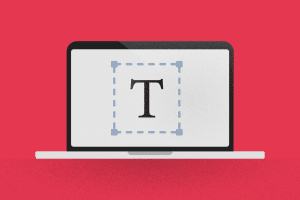It is no secret that SaaS is growing at an exceptional rate.
As more development firms offer robust solutions to varying niche industries, the typical sales process is becoming more obsolete.
Simply put, SaaS companies need innovative sales models that pertain to their unique target audience.
But how to pick the best model for your business?
We will tell you all about SaaS sales in this blog post, so keep reading!
- What Is SaaS?
- What Is SaaS Sales?
- SaaS Sales Cycle
- Which SaaS Sales Model Is Right For Your Business?
- How To Develop Your SaaS Sales Process?
- The Most Important SaaS Sales Metrics
- How Much Do SaaS Sales Representatives Make?
- Wrap Up: SaaS Sales Is Challenging, But It Can Lead To Amazing Outcomes
What Is SaaS?
From the beginning.
Software as a Service (SaaS) is a specific type of software that is hosted and managed by a single provider.
It is often accessible online and fulfills some sort of need for a particular industry.
SaaS has really taken off in the past few years as more providers realize the power of cloud computing and creating tech solutions to varying industries.
Those interested in purchasing access or subscribing to SaaS solutions can range from independent consultants and small businesses to Fortune 500 companies.
It really just depends on the platform’s particular niche and how they provide a solution to a common problem.
What Is SaaS Sales?
SaaS sales is simply the process of alerting potential users to the power of the platform and getting them to sign up as paying customers.
The benefit for end users to SaaS services is that they never have to worry about installing programs on their computers or backing up data.
It is all done on their behalf, and most platforms are available from nearly anywhere with an internet connection.
Why is SaaS sales different than other inside sales jobs?
There are numerous reasons why SaaS sales are different from other inside sales jobs, but it all comes down to the necessity of a longer sales cycle.
When you’re trying to get other companies to find value in an intangible platform, it might take longer to get in touch with the decision makers.
Furthermore, depending on the overall price point, you might be challenged to try to convey how your product serves a particular need directly.
SaaS Sales Cycle
Essentially, there are somewhere around seven steps to the total SaaS sales cycle that you need to be aware of.
They include: defining your target customer, prospecting, qualifying, upsell, dealing with objections, closing the deal, and nurturing.
While this seems like an effective roadmap, there are different elements that can make the process longer or shorter.
For example, if you have a high ticket price point and generally work with B2B decision makers, you can expect to spend longer in each stage of the sales cycle.
Let’s begin?
1. Defining your target customer
Before you can go off and start selling the benefits of your SaaS to someone, you need to begin by defining your target customer.
The more you know about who you are trying to reach and why you’re able to solve their problems, the easier it becomes to try to close the deal later on in the sales process.
Start by brainstorming several buyer personas and include details about:
- How they purchase.
- The easiest ways to contact them.
- Why they are potentially interested in your SaaS product.
You will want to look at the various reasons your target customer might object, so that you can be prepared when they express their objections.
2. Prospecting
After you determine the parameters of who counts as a qualified lead for your target market, you’ll want to start the actual prospecting process.
Some of this work might be considered active prospecting, which is where you come up with specific details of those you’re looking to present your product to.
This is the point in the overall process where you sit down and compile a list of names, contact information, and other details for use later on in the process.
Passive prospecting is also an important step. This is where you would utilize marketing tools to attract buyers within your particular niche, such as:
- Content creation.
- Video marketing.
- SEO.
- Social media.
While both are viable options for prospecting, the ultimate difference is the size of your SaaS firm and your overall goals.
Higher-priced SaaS solutions generally require more active prospecting, while smaller individual use platforms are easily marketed with passive prospecting.
Ideally, a long-term strategy should encompass elements of both.
3. Qualifying
An important part of a SaaS sales representative’s job is qualifying leads to see if they are ideal candidates.
This can be done either once the lead becomes somewhat warm or after they sign up for a free trial to the platform.
There are tools to help you score leads to determine their likelihood of purchasing, but often the best bet is to follow up to see if they have any questions about the SaaS platform.
Providing education and training resources at the beginning is a good way to ensure your lead knows that your team is serious about support.
This can be a powerful method of moving prospects along to the next step in the SaaS sales process.
4. Upsell
Once your customers have shown interest and are using the platform for a couple of months, you’ll want to begin the upsell process.
This is where the SaaS service rep gets in touch with a customer to either direct them to pay for a subscription or encourage them to continue to use the service.
This is also a crucial touchpoint in the overall sales process as it gives the SaaS salesperson a chance to upsell to a bigger product package or additional features.
While not everyone will go for the larger package, it is encouraging to customers that your firm is reaching out with robust solutions and building a relationship.
5. Dealing with objections
In every sales cycle, there are times when your target customer has plenty of objections.
These can range from price to not enough need for the features your SaaS offers.
A good SaaS sales team will be able to easily overcome these hurdles in the sales process.
This is where using a little grace and understanding can really help move the process forward without risking the deal.
For example, if they are concerned about a competitor offering a better feature, try to find out why they’re interested in that element.
From there, explain how your SaaS solution does it better or even ask your product development team to come up with a way to include it.
With price objections, it is always best to try to convey the overall value of what your SaaS provides versus not having that specific option.
Doing this requires intimate knowledge of the benefits of your service, so make sure your entire sales team is highly educated about it.
6. Closing the deal
Finally, you’re at the part of the sales process that includes closing the deal. But it is important to note that some SaaS platforms might not see this step.
Why does this happen?
- If you’re just marketing to single-user small businesses, then it wouldn’t make sense to have a lengthy contract.
- But if your SaaS is handled on a multi-user enterprise-level and there have been specific price negotiations, then you should have a formal contract.
It is also important to note that price alone is not always the best way to close a deal with a particularly finicky customer.
These savings-driven clients generally walk away once the agreement ends, which means your sales team has wasted overall time and effort.
7. Nurturing
Even after you’ve closed the deal, there’s one more crucial element to your sales cycle: nurturing.
This is where you continue to keep in periodic touch with your clients to ensure they’re still happy with the product.
The good news?
A lot of this process is usually done through automation and just the occasional phone call.
Having a solid nurturing plan can often mean the difference between a high attrition rate and customers who are extremely loyal to your SaaS brand.
Which SaaS Sales Model Is Right For Your Business?
Of course, just relying on a sales team alone isn’t always the best option for SaaS companies.
Instead, it is crucial to adopt a formal sales model that best suits your particular platform and overall target customer.
For example, if your SaaS is better for independent users and small business owners, then you might not need a huge team of sales reps.
Likewise, if your method is primarily working with corporations that require access for hundreds of users, an enterprise sales group might be necessary.
Here are the three most common and successful SaaS sales models:
Self-service
With this SaaS sales model, the customer discovers the platform on their own and signs up for access.
They may or may not have a free trial offer or be required to have a monthly subscription.
In addition, the freemium model might be used where the customer has access to a basic set of tools, but can later upgrade to a more robust version of the platform for an upgrade free.
Furthermore, your SaaS platform needs to be simple enough that the customer can figure it out without a lengthy onboarding process or too many hurdles.
The self-service model usually works well if your target audience is B2C.
Examples of SaaS companies that use a self-service model include Netflix, Pandora, and TurboTax.
Transactional
The transaction sales process is a little more involved, but only because it often has a higher SaaS price point.
Usually, these are tools that provide a more feature-heavy solution.
They can be a single-user solution or designed for a small to medium team to utilize.
With the higher selling price of this type of model, it is important that your sales team act as both educational customer service representatives and those who close deals.
Often, transactional models are better for small or newer SaaS companies that don’t quite have the resources to have a full-size enterprise sales team, but still want to build buzz around their brand.
Enterprise
SaaS enterprise sales are defined by having a larger price ticket and a much lengthier overall sales process.
Usually, there are a few parameters to consider when deciding if your SaaS solution fits this model.
For example, you’ll want your overall price point to be on the high end and your target customer to be a firm that has a large number of users and/or employees.
Enterprise sales teams are often more focused on reaching particular decision makers and presenting why their SaaS solution is the best on the market.
How To Develop Your SaaS Sales Process?
Developing your SaaS sales process really begins with looking at what you’re offering and determining the exact needs of your target market.
For instance, if your primary customer is small churches that need a better platform for taking donations, then you probably wouldn’t need a huge enterprise sales team.
But a SaaS platform that offers claims tracking and handling solutions to a national insurance company would likely need to sign a contract totaling in the hundreds of thousands or millions of dollars.
To close that deal would require much more attention from a sales team and likely would not be automated.
Deciding on the process really just comes down to what you’re offering and who you’re marketing it to.
The Most Important SaaS Sales Metrics
As you start to grow your sales, you should track various SaaS sales metrics to ensure success.
A few of the most vital to pay attention to include:
Churn
This figure is the number in which customers cancel service or leave your platform on an annual basis. It is important because it can signal a severe problem with an element of your service.
Net Promoter Score
This is how happy your customers are with your particular SaaS platform or solution and whether they’re planning on telling others about your service.
Monthly Recurring Revenue
This is the amount of money your SaaS is making off paid subscribers on a thirty-day cycle.
Annual Recurring Revenue
The amount of money you’re making on incoming revenue from SaaS customers.
Total Qualified Sales Leads
How many qualified leads your sales team is contacting on a monthly or quarterly basis.
Revenue Per Lead
How much your SaaS is making per qualified lead.
Customer Acquisition Cost
The overall cost your SaaS company is spending to turn one lead to a paying customer.
Closed Deals
The number of customers who are actually becoming paid customers versus dying deals.
Demo/Trial Ratio
If your SaaS offers free trials or even basic demos, you’ll want to know what the ratio number between these is.
While these metrics are a bit heavier than other types of sales that teams track, understanding these will help you make better sales decisions.
How Much Do SaaS Sales Representatives Make?
Depending on the particular niche and certain elements of the marketing process, SaaS sales representatives can expect an income of somewhere around $78,898 per year.
Embarking on a career in SaaS sales is challenging at times, but most people who love the excitement of closing a deal find it to be a worthwhile career.
In addition, by helping other businesses thrive, you’re contributing to the overall job market and giving the employees of those companies a better quality of life.
When you look at that perspective, it really makes taking on this type of position both joyful and rewarding.
Selling Software-as-a-Service Successfully
Selling SaaS hinges on understanding your platform’s value and the specific needs of your target market. Deciding on a sales process model, whether self-service, transactional, or enterprise, depends on factors like product price and target audience.
Challenges of SaaS Sales
Challenges in SaaS sales include a longer sales process, increased competition, and the struggle for companies with limited experience to navigate the intricacies of the process.
Questioning Your SaaS Sales Process
Evaluating the necessity of an enterprise sales team for a simple B2C solution or reallocating funds for increased marketing activities is crucial. Assessing these aspects helps refine each step of your SaaS platform’s sales process, ensuring attention is given to key money-making elements.
Improving Your SaaS Sales Process
To enhance your SaaS sales process, consider incorporating interactive content. Learn more about optimizing your strategy in our blog post.
Skills necessary for success as a SaaS sales rep
To become successful as a SaaS sales representative, there are four specific skills you should acquire and develop:
Having a knack for identifying and selling the positives of your specific service
Nothing beats a really well-thought sales pitch.
Knowing your target customer well enough
The objective is to convey the value of what you’re offering in conjunction with how well it serves the client’s needs.
Having a firm grasp on what your product can and cannot do
This is where clear communication skills really come in handy. Always give an honest answer when prospects have a question.
Being Persistent
For SaaS sales reps, patience is the key to a great career.
It can sometimes take dozens of calls or emails before you hear a response from a potential lead.
The reality is that response rates are usually below one percent, making it incredibly frustrating if you are someone who wants or needs instant results to feel content at your job.
But there is good news!
When you do connect with a lead and they become a customer, you’ll be able to celebrate your success and know that you’ve done your part in helping your SaaS company grow.
Wrap Up: SaaS Sales Is Challenging, But It Can Lead To Amazing Outcomes
While SaaS sales are a bit more complicated than standard inside sales, the process is still somewhat similar.
Both require you to know your target audience on a deep level and understand the reasons why your platform meets their needs.
Furthermore, developing the ideal business model for the type of SaaS platform you’re offering can really make a huge difference in overall sales.
As you navigate the complex landscape of SaaS sales, don’t underestimate the power of compelling content. At WriterAccess, we understand the importance of crafting narratives that resonate with your audience.
Elevate your blog content seamlessly, and watch as your metrics soar. Because in the realm of successful SaaS sales, quality content isn’t just an accessory – it’s the driving force.
Ready to unleash the potential of your narrative? Explore the art of content creation at WriterAccess.











